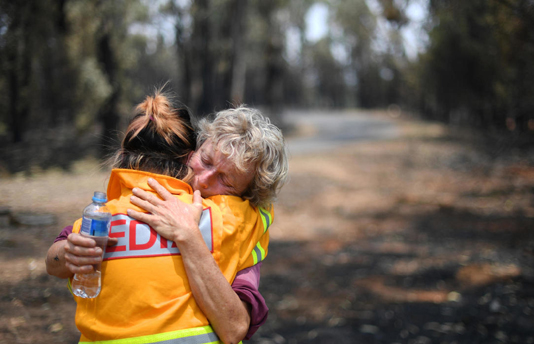SYDNEY, Jan 9, 2020 (BSS/AFP) – Bushfires flared in southern Australia on
Thursday as a heatwave expected to bring renewed misery set in, and officials
warned some areas are “just at the beginning” of the devastating crisis.
Soldiers went door-to-door advising residents to leave the South
Australian town of Parndana on Kangaroo Island after a large blaze bore down
on the area, with temperatures there soaring to 38 degrees Celsius (100
degrees Fahrenheit).
In neighbouring Victoria state, officials extended a “state of disaster”
declaration for a further 48 hours ahead of scorching temperatures that were
due to set in Friday, further stoking massive fires.
“It’s a very dangerous and dynamic situation that will confront us over
the next 12, 24 and 36 hours,” Victoria Emergency Management commissioner
Andrew Crisp said.
The catastrophic bushfires have killed at least 26 people, destroyed more
than 2,000 homes and scorched some eight million hectares (80,000 square
kilometres) — an area the size of the island of Ireland.
Scientists say the drought-fuelled blazes are being worsened by climate
change, which is increasing the length and intensity of Australia’s fire
season.
Victoria Premier Daniel Andrews warned residents to brace for further
devastation in what has already been a months-long crisis.
“We’re just at the beginning of what will be a really, really challenging
summer,” he said.
— ‘Extreme’ danger –
Despite cooler weather and rainfall providing some relief in some
bushfire-affected areas this week, almost 150 fires were still burning in
worst-hit New South Wales (NSW) and Victoria, the vast continent’s most
populated regions.
Vast tracts of the states are facing “severe” fire danger Friday, with
some areas in Victoria expected to experience “extreme” conditions.
“Don’t get complacent with the rain that we’ve seen,” Victoria police
minister Lisa Neville said.
“These fires are absolutely still moving, still growing in our landscape
and they pose significant risk to communities.”
However in some burnt-out areas people have turned to the painful task of
rebuilding their homes and lives, with the process expected to take years.
NSW announced Thursday it would spend Aus$1.2 billion (US$680 million) on
restoring infrastructure in fire-ravaged areas. That comes on top of a
separate Aus$2 billion ($1.4 billion) national recovery fund earmarked to
help devastated communities.
“We are always standing shoulder-to-shoulder with those who have been
impacted by the devastating fires, this catastrophe which has come to New
South Wales and we are stepping up to make sure we provide that support,” NSW
Premier Gladys Berejiklian said.
The bushfire toll has not been limited to human losses — the blazes have
also wreaked wide-ranging environmental damage.
University of Sydney scientists estimate one billion animals have been
killed in the fires. The figure includes mammals, birds and reptiles, but not
frogs, insects or invertebrates.
Bushfire smoke has shrouded Australia’s major cities in toxic haze for
weeks, causing major public health concerns.
The smoke has also travelled more than 12,000 kilometres (7,400 miles) to
Brazil and Argentina, according to weather authorities there.
Australia experienced its driest and hottest year on record in 2019, with
its highest average maximum temperature of 41.9 degrees Celsius (107.4
degrees Fahrenheit) recorded in mid-December.



